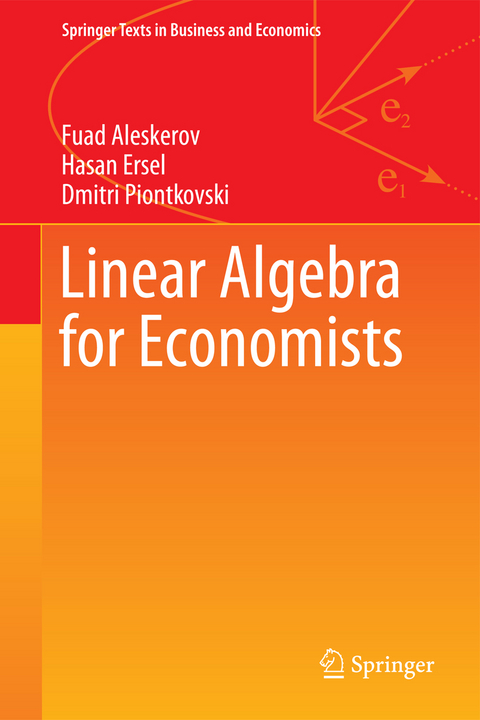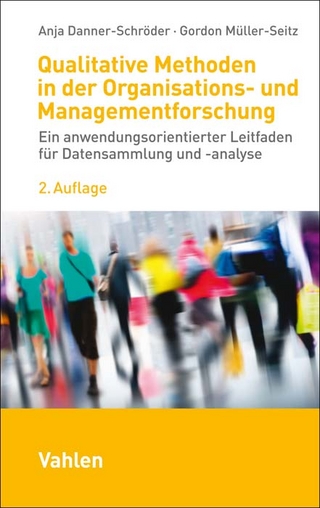
Linear Algebra for Economists
Seiten
2013
|
2011
Springer Berlin (Verlag)
978-3-642-27002-4 (ISBN)
Springer Berlin (Verlag)
978-3-642-27002-4 (ISBN)
Linearity is a primary methodology in many problems that are studied in different branches of science, including economics and other social sciences. This undergraduate level textbook introduces students to all the fundamental notions of linear algebra.
This textbook introduces students of economics to the fundamental notions and instruments in linear algebra. Linearity is used as a first approximation to many problems that are studied in different branches of science, including economics and other social sciences. Linear algebra is also the most suitable to teach students what proofs are and how to prove a statement. The proofs that are given in the text are relatively easy to understand and also endow the student with different ways of thinking in making proofs. Theorems for which no proofs are given in the book are illustrated via figures and examples. All notions are illustrated appealing to geometric intuition. The book provides a variety of economic examples using linear algebraic tools. It mainly addresses students in economics who need to build up skills in understanding mathematical reasoning. Students in mathematics and informatics may also be interested in learning about the use of mathematics in economics.
This textbook introduces students of economics to the fundamental notions and instruments in linear algebra. Linearity is used as a first approximation to many problems that are studied in different branches of science, including economics and other social sciences. Linear algebra is also the most suitable to teach students what proofs are and how to prove a statement. The proofs that are given in the text are relatively easy to understand and also endow the student with different ways of thinking in making proofs. Theorems for which no proofs are given in the book are illustrated via figures and examples. All notions are illustrated appealing to geometric intuition. The book provides a variety of economic examples using linear algebraic tools. It mainly addresses students in economics who need to build up skills in understanding mathematical reasoning. Students in mathematics and informatics may also be interested in learning about the use of mathematics in economics.
Some Basic Concepts.- Vectors and Matrices.- Square Matrices and Determinants.- Inverse Matrix.- Systems of Linear Equations.- Linear Spaces.- Euclidean Spaces.- Linear Transformations.- Eigenvectors and Eigenvalues.- Linear Model of Production in a Classical Setting.- Linear Programming.- Natural Numbers and Induction.- Methods of Evaluating Determinants.- Complex Numbers.- Pseudoinverse.- Answers and Solutions.
| Erscheint lt. Verlag | 11.11.2013 |
|---|---|
| Reihe/Serie | Springer Texts in Business and Economics |
| Zusatzinfo | XII, 280 p. |
| Verlagsort | Berlin |
| Sprache | englisch |
| Maße | 155 x 235 mm |
| Gewicht | 465 g |
| Themenwelt | Wirtschaft ► Allgemeines / Lexika |
| Wirtschaft ► Volkswirtschaftslehre | |
| Schlagworte | linear algebra • Linear Economic Models • Linear Programming • Linear Spaces • matrix theory • Vectors and Matrices |
| ISBN-10 | 3-642-27002-6 / 3642270026 |
| ISBN-13 | 978-3-642-27002-4 / 9783642270024 |
| Zustand | Neuware |
| Haben Sie eine Frage zum Produkt? |
Mehr entdecken
aus dem Bereich
aus dem Bereich
erfolgreich bei Bachelor- und Masterarbeit
Buch | Softcover (2024)
Vahlen (Verlag)
18,90 €
Buch | Softcover (2024)
Franz Vahlen (Verlag)
16,90 €
Buch | Softcover (2023)
Vahlen (Verlag)
18,90 €


